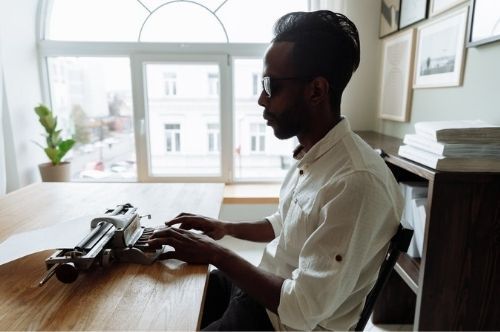As some of us have learned and seen in Lee & Low Books’s Diversity Baseline Survey 2.0, the publishing industry has lacked a great deal of diversity. Attention has been brought to this issue, and a call to focus on gaining and paying attention to more BIPOC and LGBTQ+ editors, publishers, and writers has increased because of it. But within this call for diversity, we haven’t given the disability community as much attention. The emphasis for being heard and seen seems to have side-stepped the community, and so even in the efforts to recognize and reflect our society, they’ve been underrepresented again.
In comparing the two surveys Lee & Low have put forth, one from 2015 and the other from 2019, the numbers for each group—race, gender, orientation, and disability—have shown an increase in diversity, though minimally. It is evident that straight, cis, non-disabled, white women still hold the largest space in publishing. Of the graphs, the largest change took place in orientation with a 7 percent increase of more LGBTQ+ folks. Next is gender with a 4 percent increase of trans, intersex, and nonbinary folks. And lastly, both with only a 3 percent change, are the race and disability categories. While they share the same statistics in change, there is a 13 percent difference between them with non-white people making up 24 percent of the publishing industry and the disability community making up only 11 percent. All these numbers are staggeringly low especially in a field in which representation is the face of the industry. Stories help us shape how we see and understand the world, and so to underrepresent so many identities within one of the major ways we show humanity is tragic and deeply skews the image of our world. Work needs to be done to change this in every category, and I want to focus on this change for the disability community in particular.
Within the last few years, we have taken strides as a community to come together for the Black Lives Matter movement, the #MeToo movement, and the Women’s March, and I believe this has bled into the demand for more diversity in writing and publishing. Because of these movements, we have begun to empower more BIPOC and LGBTQ+ authors by dedicating spaces just for their books in bookstores and reading more of their work. Inclusivity has become a prominent value to us, but in between all of this, the disability community has yet to be given the same attention. Where are the dedicated spaces for disabled authors? Where is the push for accessibility? Why aren’t there more intersectional characters that include a disability/disabilities? Their voices should be heard and publicized too. Their stories should be shared too. They need to be acknowledged especially considering the ways in which so many identities overlap. We aren’t just our race or our gender or our disability or our sexuality. We are all those things as they come in all the many forms, and so each side of ourselves deserves to be acknowledged in our literary world.
In order to begin acknowledging, we must begin by sharing. There are disabled authors out there sharing their stories, sharing their opinions, fighting for their needs, and writing fiction or poetry or anything else. Their disability may not be visible. They may have more than one. Regardless, let’s begin by finding them and raising up their voices. Here is a brief list of Pacific Northwest and Oregon-based disabled authors. All either from or currently residing in the area:
I hope in the future this list will grow with the attention and care that has grown for the disability community and that they will be more represented in our publishing and literary worlds. I look forward to seeing how the numbers in Lee & Low’s Diversity in Publishing charts will change.

